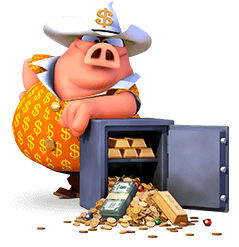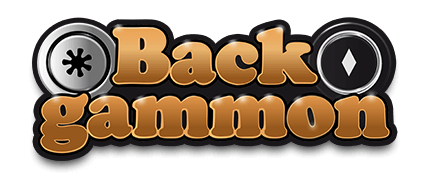Played: #{nog} game|Played: #{nog} games
#{lobby} player(s) in lobby
#{limbo} player(s) in game
In game#{lobby}
Lobby#{limbo}
Games today#{games}
Top score today#{topscore}
In order to play for money, please log in or register as a new customer.
In order to play free games, go back and select a game from the "Free" section.
Attention
You have to register to participate in this multi player game.
You must be a Premium Player in order to play for money. In order to play free games, go back and select a game from the Free section.
For the first 0 matches for money, you can select any matches with a bet up to $2.50. After 0 matches, you may also place higher bets. This is intended to protect beginners. In case of any queries, please contact Customer Support or the moderator.
You must play #{cgtp} more matches before you can bet more than $2.50.
You must register in order to use the chat feature.
Click "Next" to register for free.
You must register as a Premium Player in order to use the lobby chat feature.
In case of queries, feel free to contact our moderators at any time in 1-on-1 chat.
To do so, click on Contact under the Moderator in the player list.
You must register as a Premium Player in order to use the 1-on-1 chat feature.
You must register in order to use the full scope of features.
Click "Next" to register for free.
In order to win money, use 'Next' to access your game account and do a deposit.
In order to play for free, click on 'Free'.
You have insufficient credit in your game account to start this match. Select a different match or top up your game account.
You have already taken part in this tournament. Every participant has only 1 try per tournament. However, you may select a different tournament or just play a head to head for money.
Please play the rest of your games in this tournament.
Please wait for the start of the tournament.
If you click on NEXT, #{euro} $ will immediately be deducted from your game account.
You have already taken part in this tournament. However, you can improve your chances by taking part again. If you click on NEXT, #{euro} $ will immediately be deducted from your game account.
Possible winnings: #{win} $
Entry fee: $ #{bet}
Games: #{maxPlayer}
Game skill: #{skill}
Experience points: #{experience}
Possible winnings: $ #{win}
Entry fee: $ #{bet}
Players: #{maxPlayer}
Game skill: #{skill}
#{addText}: #{add_param}
Experience points: #{experience}
#{winStr}: #{win} $
Participation fee: #{participationFee} $
Games: #{numGames}
Skill level: #{skill}
You don't have to play all #{numGames} direktly after each other, take your #{endTimeStr} minutes.
Jackpot at the moment
Guaranteed overall winnings
In this Super tournament you have played#{numGamesPlayed} of #{numGames} games. There are #{endTimeStr} Minutes left.
Do you want to cancel the tournament rally right now?
Achtung: If you do so, your current results will be used in this tournament.
The game begins as soon as all players are ready.
#{euro} $ will immediately be deducted from your game account when the game starts.
Click on NEXT and you're ready to begin!
Free
Tournament
game
Head to Head
Practice game
Tournaments
Super Tournament
Jackpot Tournament
Cash game
Important message!
Play tournament?
Play head to head?
Play for jackpot?
Current Jackpot
Super Tournament
#{num_participants} participants
#{num_winners} winners
Past Jackpot
Last Super Tournament
Play cash game?
participate in this Super-Tournament?
cancel this Super-Tournament?
Don't show this screen again
The match could not be started. Please select a new game.
Your Skill Level is not hig enough to pariticipate in this game round.
This interrupted match expired and cannot be resumed.
Cashgames are temporary disabled. Please try again in a few minutes!
Connection to server lost. Please click 'Next' to reconnect.
Due to a bad internet connection, this game has been interrupted.
Due to a bad internet connection, this game has been interrupted.
Due to a bad internet connection, this game has been interrupted.
Due to a bad internet connection, this game has been interrupted.
Das Spiel wurde aufgrund einer schlechten Internetverbindung unterbrochen. Der Gegner wartet noch #{reconnectTime}. Danach wird das Spiel für Sie als verloren gewertet.
Unable to connect.
Warning! Your connection is probably being blocked by a firewall and/or proxy. This can have a negative effect on the game. Contact Customer Support or the moderator for help.
Starting game...
Your payment is being processed. Please wait...
If you exit this #{gameMode} before time, your current score will be saved for the evaluation. You can increase your chances of winning by continuing to play.
Really exit #{gameMode}?
If you cancel the match, you lose. Do you really want to cancel?
Loading game!
Connecting!
Please be patient…
loading…
Please be patient…
Friend
add as friend
End friendship
Your Flash Player version #{fpVersion} is obsolete.
Version #{fpMinVersion} or higher is required to start the game.
You may download an updated Flash Player
here.
has just won #{amount} $.
Show all player skills
Show my player skill
Enter message here...
Send
Invite to chat
close chat
to the lobby
Next game
1-on-1 chat with:
Profile
Details
Cancel
Next
Aufgeben
No, thanks.
Register now
become Premium Player now.
back
reconnect
Contact
$
%u%n
,
.
1
2
Start game
Create game
Join
participate
Cancel
PLAY FOR FREE
Player has returned...
Player has left...
Player has gone.
entry fee
Player name
Player skill
rank
points
#{num}. game: #{points} points
your best result: #{points} points
best result: #{points} points
Won
Lost
Prize Money
Participants
$
#{name} has won!|Did you know? The more often and the better you play, the more skill stars you receive.
You won!|In a 1-on-1 game or tournament, you would have won real money here.
You won!|In a cash game, you would have won real money here.
With this result, you would have won #{scores_beat} games today.
No suitable opponent found yet.|We will inform you of the game result as soon as somebody accepts your challenge. Good luck!
#{name} has won!|Did you know? The more often and the better you play, the more skill stars you receive.
You won!|Congratulations, the money will be credited to your game account.
You WON!
No result at the moment.
Sorry, you didn't win
Your current position is 1|The game is still exciting, because #{count} participants have yet to submit their results. We will inform you of the result as soon as the tournament ends. Good luck!|The game is still exciting, because 1 participant has yet to submit their result. We will inform you of the result as soon as the tournament ends. Good luck!
Unfortunately, you did not win.|Another player has already overtaken you.
You won!|Congratulations, the money will be credited to your game account.
Rank #{rank}
You are on #1 at the moment|There is one open game round of a differnt player. He has #{timeLeftForPending} left, to finalize his game. After that, we inform you about the final results.
Good luck.
Your current position is #{rank}|There are #{jackpotAmount} in the jackpot!
Yes
No
Yes, please cancel.
characters remaining.
Latest update: #{time}
Waiting for player
Info
Jackpot Tournaments
Close
Spielen Sie morgen weiter oder werden Sie jetzt TopGamer!
Als Fungamer stehen Ihnen nur 100000 Spielrunden pro Tag zur Verfügung. Heute haben
Sie bereits 100000 Spielrunden gespielt.
Wollen Sie weiter unbegrenzt spielen, werden Sie jetzt TopGamer .
Werden Sie
TopGamer und Ihnen stehen alle Spiele und Leistungen unbegrenzt zur Verfügung.
Sie haben Backgammon heute bereits 100000 mal ausprobiert und haben damit Ihre Probespiele als FunGamer aufgebraucht. Sie können Backgammon morgen erneut 100000 mal gratis testen oder sofort als TopGamer weiterspielen!
You do not yet have access to this game.
Create new game
Your created game
min. #{bet}
max. #{win}
#{min}-#{max} players
#{cur} of #{max} players
Players
games
Fee per game
Possible winnings
Beginner
Advanced
Expert
3
Current position
Your result: #{score} points.
You can see your current position in the tournament below.
0
180
As you canceled the game before time, your result will not be rated.
{"regulator":{"visibility":{},"playability":{},"sections":["training","match","tournament","big_tournament","jackpot","duell","duellopen"],"sort_orders":[{"field":"skill_level","order":1},{"field":"max_participants","order":1},{"field":"wager","order":1}]}}
EjVkkm
Backgammon
Invite opponent
Invite opponent
Opponent
No. of participants
Expires in
Decline
Game canceled
Select opponents
Select #{enemy} opponents by clicking on them in the list.
Possible winnings: #{win} Entry fee: #{bet}
You have selected #{min} of #{max} opponents.
will be taken from your account when all opponents are ready.
My invites
Open invites
#{name}
invites you
#{time} sec
You have been invited by “#{name}”!
Go to invite
My skill
All skills
I would like to invite
Select your own
opponents!
Invite information
invite opponent
Choose who you want to play with. The Invite feature allows you to specify which other player(s) you want to play against before you begin. As usual, you can configure all other settings, e.g. the number of matches and the fee, before play commences.
Choose a player
Spieler ausgewählt!
select #{numPlayers} more player
As soon as player #{name} has completed the round as well, we will inform you of the game result.|Good luck!
This tournament has not yet started.
Start date: #{startsOn}
Head to Head
Free game
Tournaments
Super Tournaments
Experience-Points (EP)
Open new gamround / open game rounds
Experience points
until %m/%d/%y
%H:%M
%d/%m/%y
%H:%M hrs
%d.%m.%y at %H:%M o'clock
and
days
days
hour
hours
minute
minutes
Sekunde
Sekunden
#{rank} place: #{win}
#{rank} place
Your last match was interrupted.
Your current score: points
By clicking NEXT you may resume this game now.
Continue this match?
Click PROCEED to continue playing this match.
Your game has been interrupted. Press RESUME to resume this game.
Die Verbindung zum Server wurde unterbrochen und der Gegner wartet. Tippen Sie auf WEITER um das Spiel fortzusetzen. Andernfalls wird das Spiel in #{reconnectTime} für Sie als verloren gewertet.
Resuming your match ...
Are you sure, that you don't want to continue your interrupted match? Your current highscore will be booked.
Your match will be canceled...
This game has already been finished.
Registration successfull
Congratulations! You now participate in this Super-Tournament!
You have #{numGames} games in #{endTimeStr}. Your best #{numGamesMinusWorst} Scores will be addet.
You´r already participating in this tournament
You can not participate, because there are only #{minutesLeft} minutes left in this Super-Tournament.
There are only #{minutesLeft} minutes left to play all #{numGames} games of this tournament.
Do your really want to participate in this Super-Tournament now?
#{numMatches} games
#{numMatchesPlayed} of #{numMatches} games played
#{numMatchesPlayed} of #{numMatches} games played
#{minutesLeft} minutes left for #{numMatchesRemaining} games
#{numMatchesPlayed} of #{numMatches} games played
#{minutesLeft} minutes left for one game.
In this tournament you have already played #{numMatchesPlayed} of #{numMatches} games.
You have now played your first out of #{numMatches} games.
You have now played (#{numMatchesPlayed} of #{numMatches}) in this tournament.
At the moment, #{scoreInTournament} points bring you to #{rank}
To improve your position, you can prticipate again in this tournament.
you now have#{currentScoreInTournament} points. Below you can see the best resoults.
There are #{endTime} minutes left to play the remaining #{numMatchesRemaining} games.
There are #{endTime} minutes left to play the last game. Just achive more than #{lowestScoreInTournament} points to improve your position.
your rank
In this tournament you now have#{currentScoreInTournament} points. Below you can see the best resoults.
Your game does not count because it was scored with 0 points.
/account/neu
/account/become_topgamer
/game_account#deposit
/profile/username
/assets/ajax-loader-783a3ed16f37fe9496d27b8ca120551995fda640f05cfc1f55728dd08835a03f.gif
Game account
/audios/newmessage.wav
To many chat windows.
Music on
Music off
oops
Play for money?
sorry
Your account
make a payment
/assets/paula-info-cede5dc8ae3c855a8d9af3f9f5a664a97166e3ca5913c67bf127a2961e102c07.png
/assets/i18n/en/topgamer-werden-badge-71b95ce46580caa6391c5e2e3750a4bf8d4b25a1f28fd2671d2293df6fe9fcf4.png
Moderator
WebGl is not supported by your browser.
No moderator present
/account/support
HELP
It looks like you are in [state]. Unfortunately, playing skill games for money is not allowed in [state]. If you’d like to play our games for money you must be in one of these states (link). In the meantime, please enjoy our free games.
It looks like you are playing in [state]. Unfortunately, games of skill involving cards are not allowed in [state]. Please choose a different game like Jackpot Jewels.
It looks like you are playing in [state]. Unfortunately, games of skill involving dice are not allowed in [state]. Please choose a different game like Jackpot Jewels.
It looks like you are playing in [state]. Unfortunately, tournament games of skill are not allowed in [state]. Please try one of the match games instead.


















